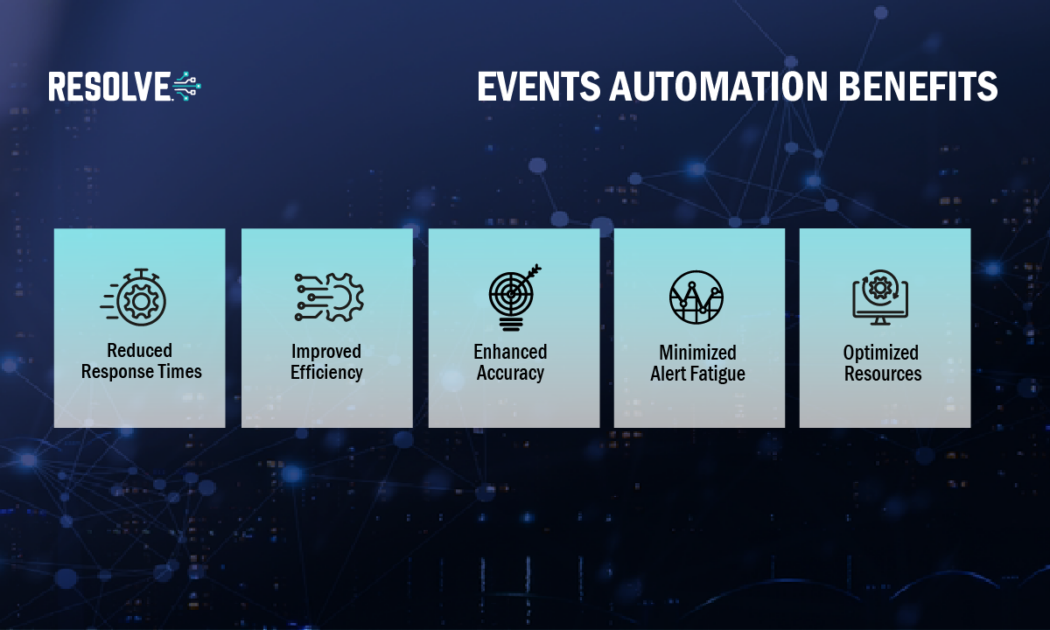
Event Management in IT: The Role of Automation for a Seamless Experience
Subscribe to receive the latest content and invites to your inbox.
Event management plays a critical role in keeping IT and network systems running smoothly.
It involves monitoring and handling events generated by servers, applications, networks, and security tools to ensure a stable, secure, and reliable IT environment. However, the complexity and volume of events in modern IT ecosystems make manual management increasingly challenging.
Too many events hitting an IT system or event management platform can create several challenges and risks. Event overload can compromise an organization's ability to monitor, detect, and respond to critical issues effectively.
What are the Perils of Having Too Many Events?
I am glad you asked!
- Alert Fatigue: An excessive number of events and alerts can lead to alert fatigue, where IT personnel become desensitized to the constant stream of alerts. This can result in critical alerts being overlooked, delayed responses, or inadequate attention to significant issues.
- Reduced Visibility: With too many events, it's difficult to discern the most critical events from the less significant ones. This can obscure visibility into the overall health of the IT environment and make it challenging to identify high-priority issues or trends.
- Performance Impact: Processing a large volume of events can strain the event management system, impacting its performance. High event volumes can lead to increased resource usage, slower processing times, and potentially system crashes, further complicating event management.
- Increased Risk of False Positives/Negatives: A flood of events increases the likelihood of false positives and false negatives. False positives can cause unnecessary actions to fix problems. False negatives might let serious issues go unnoticed. This can lead to system downtime or security breaches.
- Slow Response Times: When overwhelmed with events, IT teams may take longer to respond to significant issues. Slow response times can exacerbate the impact of incidents, leading to extended downtime or more severe security breaches.
- Resource Drain: Managing a large number of events requires additional IT resources and personnel time. Organizations may need to allocate more resources to event management, diverting attention from other important tasks or strategic initiatives.
Just to name a few!
This is where events automation comes into play. It offers organizations a way to streamline event handling, improve efficiency, and minimize downtime.
In this blog, we will look at what event management is. We will discuss why automation is important and discuss the challenges it solves. Finally, we will describe a fully optimized event management solution.
What is Event Management?
Event management in IT refers to identifying, monitoring, and responding to events generated by IT systems. Events could include anything from routine notifications, such as a user logging in, to critical alerts, such as a server going offline or a security breach being detected.
The goal of event management is to identify significant events, correlate them to detect patterns or incidents and take appropriate action to ensure system stability and performance.
Effective event management helps organizations avoid downtime, maintain service availability, and address issues before they escalate.
Events Automation is a Game Changer
Remember the perils we talked about just a few lines earlier? With complex IT infrastructures generating thousands (or even millions) of events daily, events automation has become indispensable.
Automation uses tools and predefined workflows to handle routine tasks, prioritize critical alerts, and even take corrective action without human intervention.
How it Helps
Automation can significantly enhance event management in IT by streamlining processes, improving response times, and reducing manual effort.
Here's how automation can help with event management:
Event Collection and Aggregation
Automation tools can collect events from multiple sources, such as servers, applications, network devices, and cloud environments, and aggregate them into a centralized platform. This consolidation allows for easier monitoring and analysis.
Event Correlation and Analysis
Automation can correlate related events across different systems, identifying patterns or relationships that might indicate a larger issue. By automating event correlation, organizations can more quickly identify the root cause of complex problems.
Automated Alerts and Notifications
Automation can be used to set up triggers for specific events or conditions. When these triggers are met, automated alerts and notifications can be sent to the appropriate personnel or teams, reducing response times and ensuring that critical events receive attention.
Event Prioritization
Automation can help prioritize events based on severity, impact, or other criteria. By automatically categorizing events, organizations can focus on high-priority issues first, ensuring that the most critical events are addressed promptly.
Automated Responses and Remediation
Automation allows for predefined responses or remediation actions to be executed automatically when specific events occur. For example, if a server experiences high CPU usage, automation can automatically scale resources or restart a service to mitigate the problem.
Integration with Incident Response
Automation can integrate event management with incident response processes, ensuring a seamless transition from event detection to incident resolution. Automated workflows can guide incident response activities, facilitating a coordinated approach among different teams.
Data Enrichment and Visualization
Automation can enrich event data with additional context, such as user information, device details, or geolocation. This enriched data provides greater insights and can be used to create dashboards or visualizations for easier analysis and reporting.
Continuous Monitoring and Proactive Detection
Automation enables continuous monitoring of IT systems, allowing organizations to detect potential issues proactively. Automated monitoring tools can identify anomalies, unusual patterns, or security threats, providing early warnings before problems escalate.
Compliance and Audit Support
Automation can help with compliance and audit requirements by providing automated logs and records of events, actions taken, and incident resolutions. This automated documentation makes it easier to demonstrate compliance with industry regulations and internal policies.
Overall, automation is critical in enhancing event management by improving efficiency, reducing response times, and ensuring consistent and reliable processes. It allows organizations to handle large volumes of events effectively, leading to improved system reliability and operational performance.
Benefits of Events Automation
With automation, the conversation flips to transforming IT or network operations.

- Reduced Response Times: Automated systems detect and respond to events instantly, minimizing downtime and improving service continuity.
- Improved Efficiency: Routine tasks, such as restarting a service or scaling resources, are handled automatically, freeing up IT teams to focus on strategic initiatives.
- Enhanced Accuracy: Automated workflows follow predefined rules, ensuring consistent and error-free responses to similar events.
- Minimized Alert Fatigue: Automation filters out noise by aggregating, prioritizing, and correlating events, so IT teams only focus on critical issues.
- Optimized Resources: Automation dynamically scales resources, ensuring IT systems operate efficiently while keeping costs in check.
Automate or Fall Behind
In the age of digital transformation, event management is a cornerstone of effective IT operations.
As IT ecosystems grow in complexity, events automation becomes critical for ensuring systems remain secure, reliable, and efficient. By adopting a fully optimized event management solution with automation, organizations can streamline operations, minimize risks, and unlock new levels of scalability and resilience.
Choosing the right tools is important for event management. This applies whether you are new to the field or looking to improve your system with automation. This investment will help your IT operations succeed in the long run.






